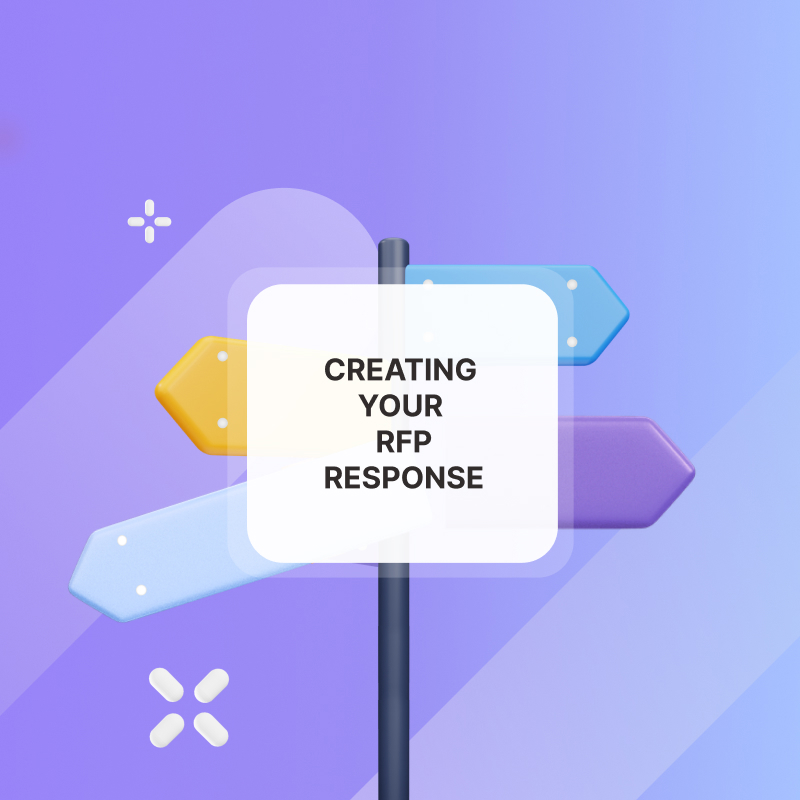
Whether you're a startup gaining traction or an established brand optimising performance, it is important to select the best sales strategy for your business.
Let’s dive in and learn the difference between inside and outside sales. You would also learn how to determine what strategies align best with your business goals.
What is Inside Sales?
Inside sales involves selling from a remote or virtual location. Selling is usually done through phone calls, email, digital salesrooms, or other virtual environments
Benefits of Inside Sales
Lower Cost per Lead: Compared to outside sales representatives, inside sales reps don’t require travel expenses thereby reducing cost per lead. Inside sales heavily relies on technology for communication, streamlining processes and minimising manual efforts. This lowers operating costs and increases efficiency. Tools for task management, performance tracking, and virtual collaboration allow for effective remote team management, eliminating costs associated with traditional in-office operations
Targeted Reach: According to Hubspot, 64% of sales leaders who transitioned to remote sales in 2020 met or exceeded their target. Inside sales heavily utilises sales software, marketing automation tools, and analytics to identify and target specific demographics, or industries. This laser-focus eliminates wasted effort on irrelevant leads
Scalability & Efficiency: Inside sales teams offer flexible work arrangements, attracting top talent. According to Hubspot, 63% of leaders believe virtual meetings can be as effective as in-person meetings.
Also, data-driven insights from online interactions and sales tools allow for real-time monitoring and optimisation of targeting strategies. This ensures efficient resource allocation and continuous improvement.
For example, Hubforce allows you to create personalised digital sales rooms for as many prospects as possible and monitor their engagement with your sales content in real-time.
More market coverage: Inside sales teams are easily scalable due to remote work opportunities, allowing you to quickly adjust your reach to new markets or segments without geographical limitations.
Challenges of Inside Sales
Remote Team Management: Maintaining engagement and motivation in a remote team requires deliberate measures. Invest in virtual collaboration tools and regular feedback sessions to keep your team thriving.
Lead Generation Is Competitive: Prospects are constantly being bombarded with sales pitches and emails. You have to stand out through a hyper-personalised approach or account-based outreach strategy.
You Need Strong Buyer Engagement Techniques: You must rely heavily on real-time data to measure buyer engagement. For example, you reach out to your point of contact and send them some content to look at.
How do you know if they shared that content with other stakeholders?
This is where Hubforce comes in. It provides real-time data on prospects' engagement with your sales material. You can see if your sales content has been shared and who is looking at it. This helps you to determine what matters most to decision-makers.
You Need A Champion: In inside sales, it is often difficult to penetrate the company without any help.You need a solid champion who is interested in you and willing to advocate your solution to other stakeholders.
Best Practices for Inside Sales
Invest in Effective Sales Tools: Equip your team with CRM platforms, buyer-enablement software, and other sales and collaborative tools to boost productivity and collaboration. You can invest in sales tools like Hubspot CRM and Hubforce digital sales room.
Hubforce allows sales teams to structure all relevant information according to each stakeholder’s priority enabling you to address the priorities of all decision makers.
Training Programs: Invest in ongoing sales training and coaching to improve your sales team’s skills and stay ahead of the curve.
Multithread with Different Stakeholders: By engaging with various stakeholders like decision-makers, and technical users, you get a diverse view of the company's needs, pain points, and buying process.
Early engagement with different stakeholders helps you anticipate potential objections, allowing you to proactively address them.
For example, once you identify the relevant stakeholders and invite them to your digital sales room, you can track their engagement in real time and follow up accordingly.
If you see that a stakeholder visited your ROI calculator and price quote multiple times. That might be the economic buyer. You can reach out with detailed case studies of improved ROI, and tackle objections before they come up.
Set Up a Collaborative Sales Environment: B2B sales is teamwork. For inside sales, you need a collaborative sales environment where your sales and buying team can collaborate effectively. Hubforce provides this type of environment where stakeholders can chat and communicate with your team. Also, other stakeholders can keep up with the conversions at their own pace.
Outside Sales
Outside sales, also known as field sales, refers to a sales strategy where representatives physically meet with potential customers face-to-face to build relationships, demonstrate products or services, and ultimately close deals
Benefits of Outside Sales
Higher Average Deal Size: Outside sales are usually more effective for closing large-scale enterprise deals because there is a higher level of trust involved. Building trust and rapport in person allows for deeper connections with key decision-makers, making them more comfortable investing in larger solutions. In-depth conversations and site visits reveal complex challenges, allowing you to propose comprehensive solutions to justify larger investments.
Competitive Advantage: If you can penetrate, building relationships through outside sales sets you apart from competitors relying solely on remote interactions.
Increased sales rep engagement: Travelling to meet clients, facing different personalities, and adapting to diverse situations provide a dynamic and challenging work environment, which can be more engaging than repetitive phone calls or emails. The nature of outside sales requires constant learning and adaptation. Negotiating, handling objections, and building rapport on-the-go teaches valuable communication, interpersonal, and sales skills, which contribute to personal growth and career advancement.
Challenges of Outside Sales
Travel Costs: Hitting the road comes with expenses like flights, hotels, and meals, impacting your budget.
Time Management: Juggling travel, meetings, and actual selling can be time-consuming.
Requires Great Emotional Strength and Resilience: Dealing with negative customer behaviour in person can be challenging.
Best Practices For Outside Sales
Effective Territory Management: Divide your market into manageable territories, ensuring reps focus on the right prospects. Utilise data-driven insights to allocate territories. This would allow sales reps to concentrate on specific prospects and tailor their efforts effectively. Strategic planning also minimises travel time and face-to-face interaction, ensuring reps spend more time closing deals and less time on the road.
Personalised Sales Approach: Train your reps in active listening, tailoring their pitch to each client's unique needs and preferences.
Followup Effectively Using Sales Technology: This is so that even if you are not in their geographic location at any time, you can easily identify and follow up on issues, upsell, or cross-sell opportunities. Hubforce allows you to create personalised collaborative workspaces for sales and post-sale communication. This helps to build even stronger relationships and trust which goes beyond in-person meetings.
How To Choose The Right Sales Strategy For Your Business.
Know Your Audience:
Does your target audience prefer remote interactions or face-to-face meetings?
Analyse your Product/Service:
- Does your product require extensive explanation and personal demos, or is it self-explanatory?
- Is your product high-ticket targeted towards specific industries or mass-market?
Consider Your Budget:
- Cost per lead: Compare cost estimates for inside and outside teams, including travel, technology, and training.
- Return on investment (ROI): Analyse which approach offers the highest potential ROI based on expected conversion rates and deal sizes.
Align with Your Goals:
- Growth rate: Are you aiming for rapid expansion or controlled, sustainable growth?
- Market penetration: Do you need to reach a broad audience or focus on specific segments?
Choosing the right sales strategy is an ongoing process. Experiment, monitor results, and refine your approach as your business evolves.
Hubforce Streamlines Your Desired Sales Strategy
Inside Sales
- Enhance your outreach: Hubforce allows you to personalise your outreach at scale by enabling you to create customised digital sales rooms for each prospect. This demonstrates thoughtfulness and increases your chances of a reply in a world of generic outreach.
- Personalised and streamlined sales process: With Hubforce you can easily create a centralised environment where you can automatically structure all your sales collateral according to the order of relevance for each stakeholder involved in the buying process. Instead of living on assumptions, Hubforce provides real-time stakeholder engagement analytics for each content in your digital sales room. For example, if a lead shares the hub/sales room, and you see engagement from other stakeholders, this could be a good sign.
- Effective Buyer Engagement: Hubforce provides real-time stakeholder engagement analytics to help you see what content interests them at any point. Hubforce AI also suggests follow-up messages and actions for you.
Outside Sales
- Effective Follow-up and Onboarding:
To reduce the cost of in-person meetings required before the deal is closed, you can create a personalised digital sales room with structured mutual action plans. Mutual action plan can be used to reinforce discussions and plans made during the in-person meeting. Hubforce smart analytics allows you to track prospects' engagement with the plan.
Hubforce also enables you to create personalised collaborative onboarding workspaces. You can track their engagement and provide real-time support even if you are not physically present.
Create 5 digital sales rooms and sell effectively to 5 customers for free
















